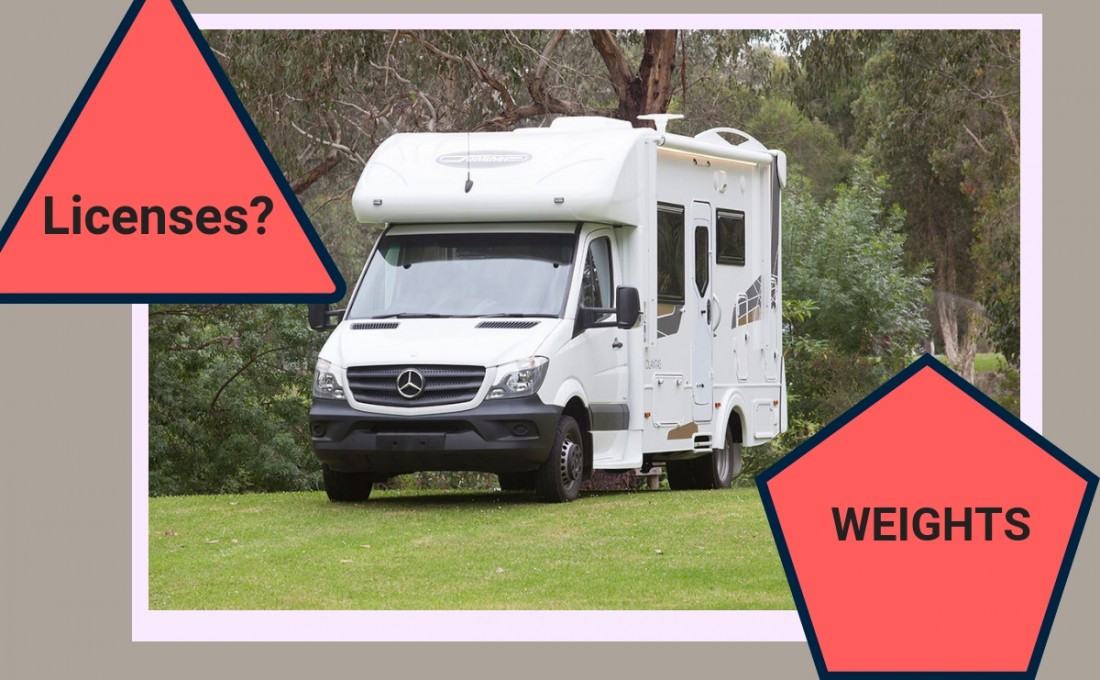Motorhome Weights and Licenses explained
Understanding the weights of a motorhome and how this relates to licenses is a critical step in choosing the perfect motorhome for your needs. It is also an essential skill in owning a motorhome and managing your life on the road.

Understanding the weights of a motorhome and how this relates to licenses is a critical step in choosing the perfect motorhome for your needs. It is also an essential skill in owning a motorhome and managing your life on the road.
Check out our useful guide to terms and how they apply to motorhomes.
Tare Mass or Weight
This is the weight of an empty standard vehicle with all of its fluids (oils, coolants) and with at least 10% capacity of fuel in the tank.
Gross Vehicle Mass (GVM)
This is the maximum your vehicle can weigh as specified by the chassis manufacturer. You will usually find this GVM figure on the vehicle’s weight placard.
NOTE: It is important to be mindful of your GVM when adding accessories and making modifications.
Payload or Load
Deduct your vehicle’s Tare Weight from the GVM, what’s left is the payload or the maximum weight you can load into your RV. This includes but is not limited to the following;
- People on board (driver and passengers)
- Water in water tanks (fresh and gray)
- All of your gear and personal items
- Fuel
- The Tow Ball weight if you are towing.
Licenses
This information is only a guide as each state has its own variations. Please consult your local authority for definitive answers.
- Car License - A vehicle that does not exceed 4.5 tonnes (GVM)
- Light Rigid - has GVM more than 4.5 tonnes but not more than 8 tonnes
- Medium Rigid - has a GVM more than 8 tonnes and has no more than 2 axles.
NOTE: Some units at the time of RV manufacture, which are built on a chassis with dual-rating, can be plated with a GVM of either 4.495 tonnes (car license) or a higher (light/ medium rigid license) depending on chassis manufacturer guidelines.